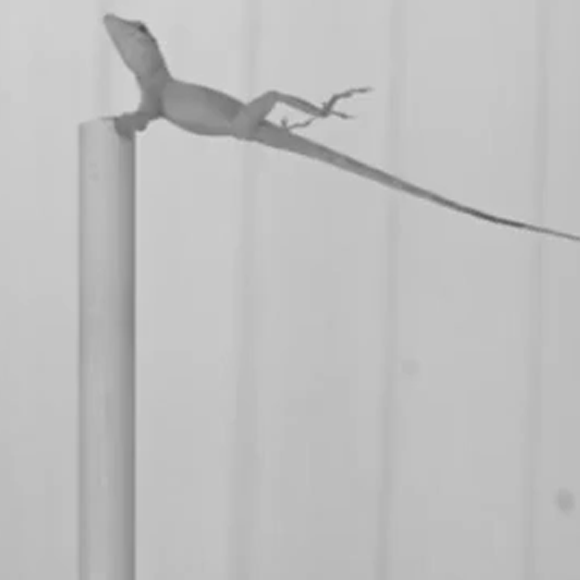How Can We Estimate Enormous Numbers?
Watch the video and discover how many piano tuners are there in Chicago and how you can reach the solution.

Based on the example presented, what are the conditions required for scientific writing of numbers? Choose the correct answer
A product where the absolute value of the first factor is greater than 1 but smaller than 10, and the value of the second factor is represented by an exponent of 10.
Well Done! Partial Correct Answer Correct Answer Incorrect Answer
A sum where the first term is larger than 1 but smaller than 10 and the second term is represented by the power of 10.
Well Done! Partial Correct Answer Correct Answer Incorrect Answer
A product with the first factor is smaller than 1 and the second factor is greater than 10.
Well Done! Partial Correct Answer Correct Answer Incorrect Answer
A product with the first factor is smaller than 10 and the second factor is greater than 1.
Well Done! Partial Correct Answer Correct Answer Incorrect Answer
Notice that when the speed of light was represented as numbers in scientific writing, the number was rounded up. The speed of light is 299,782,458 meters per second, and in scientific writing it is represented as 3 * 10^8. This is due to the fact that sometimes it is enough to just get an estimate of a number, despite being inaccurate, as you will see in the next examples.
There’s an activity in the activity database titled “Try and estimate: How much candy is there in the bottle?” that deals with calculating and estimating how much candy fits in a bottle. You can read about this in the following article, demonstrating a similar concept to calculations of candies in a jar by using estimation calculations: https://bit.ly/39Hn9iv.
Try and think: what other domains of mathematics could assist us in calculating the amount of candies in a jar?
Try and think: What sort of information is needed in order to find out how many piano tuners are there in Chicago, the biggest city in the state of Illinois?
Which of the following sizes is the proper estimate for the number of residents in Chicago? Choose the correct answer.
$10^{7}$
Well Done! Partial Correct Answer Correct Answer Incorrect Answer
$10^{8}$
Well Done! Partial Correct Answer Correct Answer Incorrect Answer
$10^{5}$
Well Done! Partial Correct Answer Correct Answer Incorrect Answer
$10^{6}$
Well Done! Partial Correct Answer Correct Answer Incorrect Answer
How did they reach the estimation that there are 10,000 pianos in Chicago? Choose the correct answers.
$10^{7}\cdot 10^{-2}$
Well Done! Partial Correct Answer Correct Answer Incorrect Answer
$10^{6}\cdot 10^{-1}$
Well Done! Partial Correct Answer Correct Answer Incorrect Answer
$10^{6}\cdot 10^{-2}$
Well Done! Partial Correct Answer Correct Answer Incorrect Answer
Approximately one in every 100 people owns a piano, and if there are roughly 10,000,000 residents, we get 10,000 pianos.
Well Done! Partial Correct Answer Correct Answer Incorrect Answer
Approximately one in every 100 people owns a piano, and if there are roughly 1,000,000 residents, we get 10,000 pianos.
Well Done! Partial Correct Answer Correct Answer Incorrect Answer
Approximately one in every 10 people owns a piano, and if there are roughly 1,000,000 residents, then we get roughly 10,000 pianos.
Well Done! Partial Correct Answer Correct Answer Incorrect Answer
On occasions, we overestimate a certain quantity in a specific question, and also underestimate a different quantity in the same question. For example, in our case the number of residents was underestimated: In Chicago there are nearly 3 million people, and we estimated one million: at the same time we overestimated the number of people who own a piano. We estimated that every 100 people owns a piano, however the number is reality is lower. Therefore, the errors cancel each other out and consequently the final estimate is usually rather close to the correct answer.
Read further about Fermi and this field in the following links:
“Naive mathematics and gut-feelings” https://bit.ly/2wgJAgY
Enrico Fermi: https://bit.ly/39CZAax
Estimations using orders of magnitude- how can we estimate enormous numbers? - An interactive video
Play VideoActivity Overview
In this video, the pupils will be exposed to various uses of estimation. The topic of estimation and rough assessments is a very useful visualization tool for a given situation. The video presents principles that connect between scientific writing and assessments using estimations. In addition, the video will mention physicist Enrico Fermi. It is recommended to further elaborate on Fermi’s work or refer the pupils for further reading from other resources following the video.
The questions are based solely on the video. The length of the video including answering the questions is roughly 15 minutes.
Numbers in scientific writing, estimation and assessment, order of magnitude, exponentiation rules.
Knowledge building



